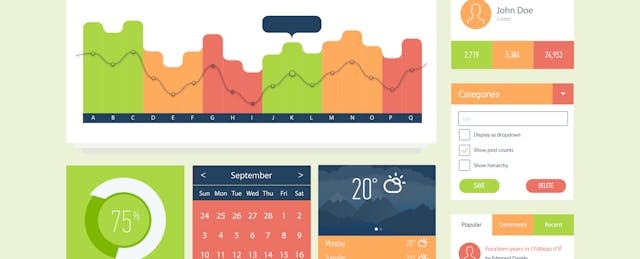I love data. In my last role as Redesign Administrator at an urban middle school, I immersed myself in it. I downloaded spreadsheets of student performance on a daily basis, and I built beautiful dashboards for the admin team and staff.
Our students had unlimited access as well. They could log into our grading system for real-time grades, and look at a consolidated data sheet for performance on several skill assessments. Students would then be motivated to take ownership of their own learning and growth—or so we thought.
But it didn’t work. When report card time came, I’d be baffled by large numbers of students who were surprised at their grades. Despite all of the tools, they would go look at the old-school printed grade sheet on the wall, and say things like:
“You didn’t tell me I had any missing assignments!”
“Wait, that district test counted for my grade?”
“My teacher gives me whatever grade s/he wants. Oh well.”
For a school that was pushing on student ownership and agency, these were gut wrenching to hear. That last one especially.
Thanks for this awesome data sheet, Ms. Gupta! (Said no student, ever)
I used to think that if we could just present aggregate, real-time, relevant data to students in a simple way, only good things could come. Student-driven diagnosis, motivation and growth would be natural by-products.
But instead, it became just another way school was being “done” to students. They received a mysterious data sheet that came out of Ms. Gupta’s computer or some impersonal software. The adults were once again stamping a label on who is a good student versus a bad student. They would look at my beautiful dashboards, shrug their shoulders, and move on in a blink of an eye.
We tried to inspire reflection, but it often happened separate from learning. At the end of the semester, we’d ask students about their strengths and weaknesses, and what they could do differently next semester. They would write down a few ideas, but were never asked to come back to them. It became an activity that yielded little impact.
I recently observed an 8th grade classroom using a sophisticated online math program that provided daily updates to student playlists and schedules. The student homepage is an automated dashboard that shows progress on core skills and gaps that need to be filled. I watched a student complete a lesson successfully, and his dashboard promptly updated saying “You’ve mastered Skill 510!”
I gave him a high-five and asked him what Skill 510 was. He looked at me, looked at the screen, and said, “I have no idea.” We must do better.
How might students interact with their data in a meaningful way?
Having seen these results, I’ve totally changed my tune on this process. Adults automating student dashboards isn’t the answer, no matter how comprehensive and beautiful they are. I believe students need to have a central role in creating their own data story. And in the moments of learning, they must think critically about their personal next steps to push the story forward.
At Roosevelt Middle School in Oakland, CA, the team worked tirelessly on data collection. They scoured data sources back several years, and built deep academic snapshots of each student’s progress and growth over time. Instead of just handing these to kids, however, they are coming up with ways for students to engage and make the data their own. For example, they asked students to graph their math scores over time so students visually construct and better understand their own trajectory.
When I participated in Summit Learning’s professional development, they emphasized the role of a mentor to engage with students on their data. Their schedule carved out weekly one-on-one checkins for every student, where the output of the automated dashboards could be unpacked and next steps defined. Carpe Diem Schools does something similar.
I applaud these efforts that allow students to touch and shape their own data, instead of it just being handed to them. As a system, we need to come up with more scalable ways to do this. I love the mentorship model, but I know building that time into a master schedule is difficult. (We weren’t able to make it work at my last school.)
My contribution to this thinking is a new tool that doesn’t require adult aggregation of data at all. Instead, students enter in their own scores on items as they go, and write quick, in-the-moment reflections on what they can do differently next time. They own their learning dashboard instead of relying on adults or an LMS to process the data for them. Teachers can respond in the tool with quick notes of feedback, allowing for more flexibility (and less time) than one-on-one conferences.
We’ve seen the locus of control shift. Student data becomes less “what a teacher gave me” and more “what I earned” and “I am in full control to change it.” Those are far better words to be hearing from students.


